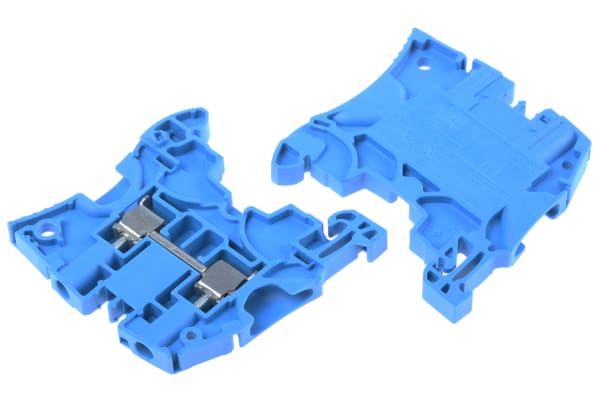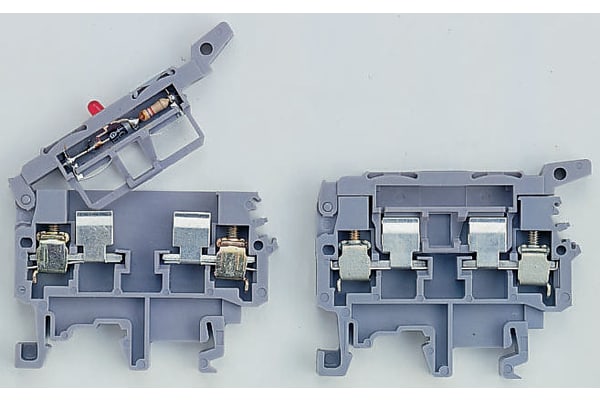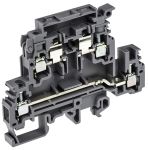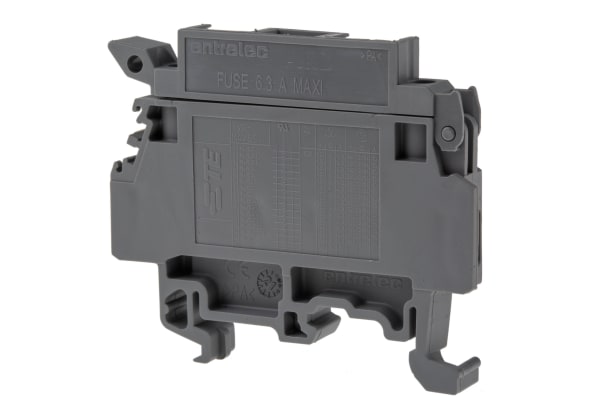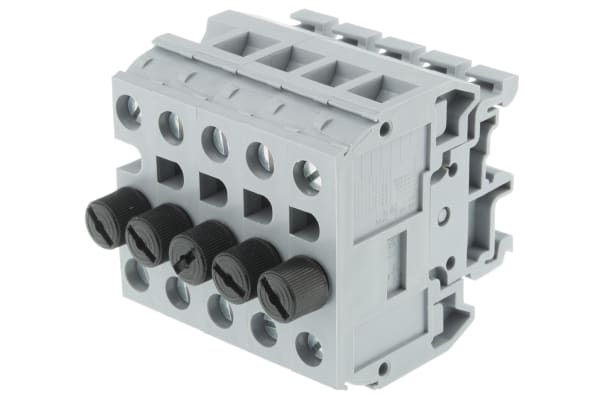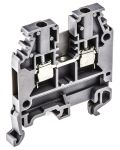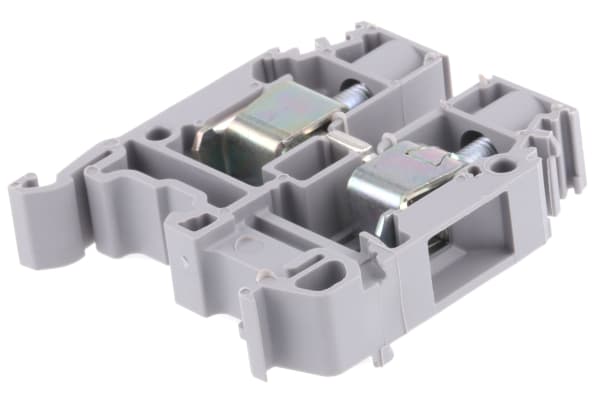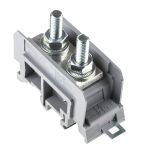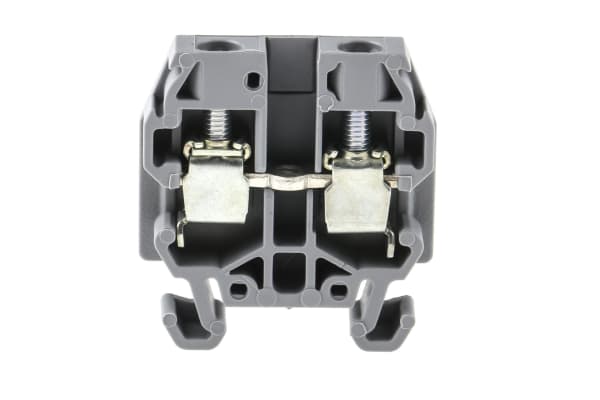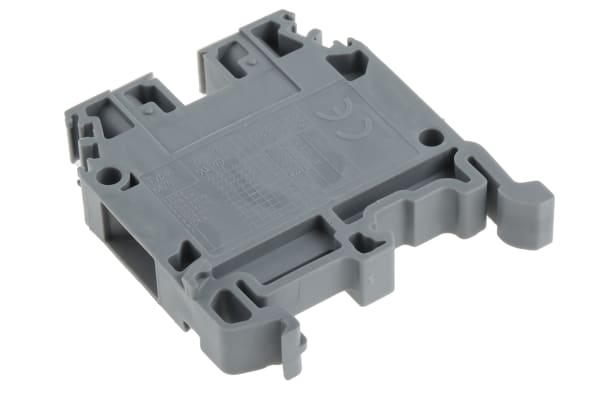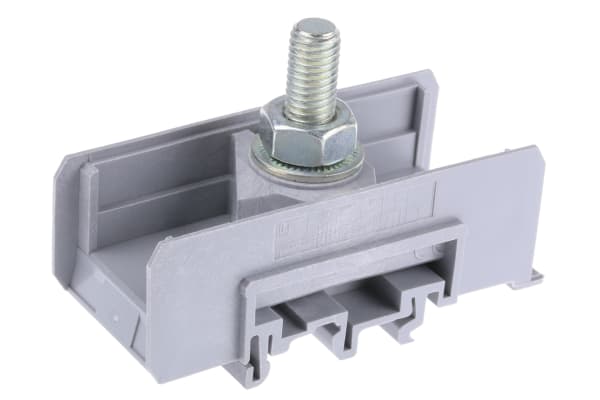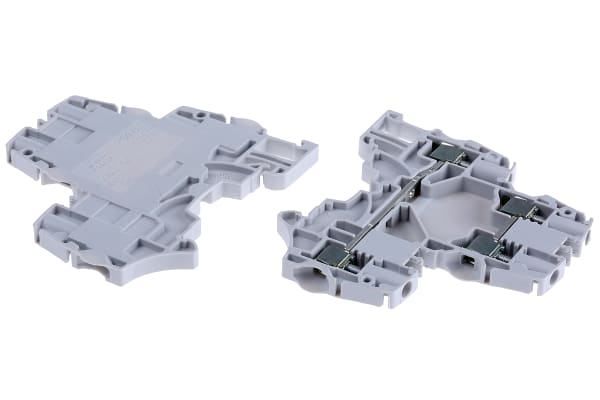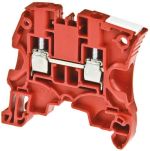DIN Rail Terminal Blocks
DIN Rail terminal blocks are used to protect electrical systems against overcurrent and short-circuiting. They clip on to a DIN rail, which is a standard-size metal rail on to which terminals are mounted in a control cabinet. You can find out more in our complete guide to DIN rail terminal blocks. How do DIN rail terminal blocks work? DIN rail terminals are made from plastic, as this insulates the electrical current running through the terminal. Fused DIN rail terminals often have a hinged section containing the fuse, which can be opened up to stop the flow of electricity. Some are fitted with an LED blown fuse indicator to let you know when the fuse needs changing. Fused DIN rail terminals come with different fuse size inserts and may be colour coded to indicate the current rating. Non-fused work the same, just without the fuse protection. What are fused DIN rail terminals used for? Fused DIN rail terminals are widely used in industry and offer more protection from overcurrent than non-fused DIN rail terminals. They are usually used to protect sensors and relays. However, both fused and non-fused can be used for applications such as: Energy managementPower suppliesLighting controllersTelecommunicationsBuilding management systemsIndustrial and civil electrical installationsHeating and air conditioning controls
-
ABB 1 Gang Plug Socket, 16A, Type E - French, Indoor Use
IDR232,016.68 -
ABB Grey 1 Gang Plug Socket, 16A, Type F - German Schuko, Indoor Use
IDR342,675.63 -
APC Power Distribution Socket Power Distribution Socket, 44 mm
IDR5,125,554.74 -
Entrelec Black ZS4 Feed Through Terminal Block, 4mm², ATEX, 1 kV ac
IDR241,247.00Pack (1 Pack of 10) -
Entrelec Blue ZS4 Feed Through Terminal Block, 4mm², ATEX, 1 kV ac
IDR168,558.23Pack (1 Pack of 10) -
Entrelec Brown ZS4 Feed Through Terminal Block, 4mm², ATEX, 1 kV ac
IDR172,019.60Pack (1 Pack of 10) -
Entrelec Grey M Fused DIN Rail Terminal, 14 (with ferrule) AWG, 12 AWG, 4mm², 600 V
IDR865,447.39Pack (1 Pack of 5) -
Entrelec Grey M Fused DIN Rail Terminal, 14 (with ferrule) AWG, 12 AWG, 4mm², 630 V
IDR280,370.97Pack (1 Pack of 5) -
Entrelec Grey MA Fused DIN Rail Terminal, 14 (with ferrule) AWG, 12 AWG, 4mm², 630 V
IDR646,961.52Pack (1 Pack of 5) -
Entrelec Grey MB Fused DIN Rail Terminal, 16 AWG, 10mm², 600 V
IDR740,418.51Pack (1 Pack of 5) -
Entrelec Grey SNA Feed Through Terminal Block, 50mm², 1 kV ac
IDR204,115.94 -
Entrelec Grey SNA Non-Fused DIN Rail Terminal, 2.5mm², 800 V ac
IDR108,875.82Pack (1 Pack of 10) -
Entrelec Grey SNA Non-Fused DIN Rail Terminal, 4mm², 800 V ac
IDR304,285.89Pack (1 Pack of 10) -
Entrelec Grey SNA Standard Din Rail Terminal, 10mm², 1 kV ac
IDR487,004.27Pack (1 Pack of 10) -
Entrelec Grey SNA Standard Din Rail Terminal, 16mm², 1 kV ac
IDR367,115.00Pack (1 Pack of 10) -
Entrelec Grey SNA Standard Din Rail Terminal, 25mm², 1 kV ac
IDR132,056.51 -
Entrelec Grey SNA Standard Din Rail Terminal, 4mm², 500 V ac
IDR337,536.02Pack (1 Pack of 25) -
Entrelec Grey SNA Standard Din Rail Terminal, 4mm², 800 V ac
IDR272,818.89Pack (1 Pack of 5) -
Entrelec Grey SNA Standard Din Rail Terminal, 6mm², 1 kV ac
IDR449,663.43Pack (1 Pack of 10) -
Entrelec Grey SNA Stud Terminal, 120mm², 1 kV ac
IDR165,096.86 -
Entrelec Grey SNK Double Level Terminal Block, 4mm², 800 V ac
IDR311,942.86Pack (1 Pack of 5) -
Entrelec Grey ZK2.5 Multi Level Terminal Block, 12 AWG, 2.5mm², 800 V
IDR279,112.29Pack (1 Pack of 5) -
Entrelec Orange ZS4 Feed Through Terminal Block, 4mm², ATEX, 1 kV ac
IDR341,102.28Pack (1 Pack of 10) -
Entrelec Red ZS4 Feed Through Terminal Block, 4mm², ATEX, 1 kV ac
IDR207,787.09Pack (1 Pack of 10)






